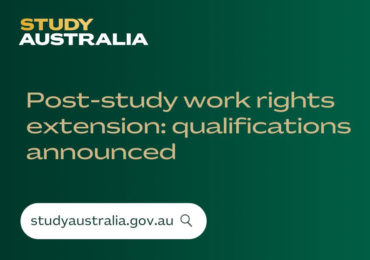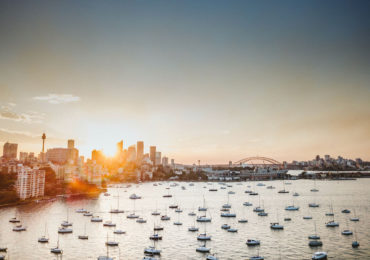Just moving houses can be a big deal – let alone moving to an entirely new city. Have you thought about the expenses you’ll need to think about in order to live the kind of life you want? Here’s five key steps to consider in getting together a routine for your new life in another city.
Let’s start from the beginning.
-
Choosing a place to live
The first thing you’ll do, is to select the location you want to live. You can choose between a homestay (a room you rent with a local family), or you can rent a bed or a room and share with other people from around the world in what’s referred to in Australia as a ‘sharehouse’. Another option is to rent a house or apartment yourself – but this can be quite an expensive option in most cities.
If you’ve chosen one of these options before, consider trying another one. You’re already travelling outside your home country, so you’re no stranger to stepping outside your comfort zone. Challenging yourself through trying new things, can lead to wonderful outcomes!

Room sharing
Renting a room is the typical option, in some cases it can include all your bills (Internet, power, and water). Prices typically start from:
- AU$313 per week (Sydney),
- AU$234 per week (Melbourne),
- AU$218 per week (Gold Coast),
- AU$210 per week (Canberra, Wollongong and Brisbane),
- AU$200 per week (Perth),
- AU$191 per week (Newcastle), and
- AU$181 per week (Hobart and Adelaide)
These are the typical minimum prices that you can expect to pay, with weekly costs going up to as much as you can imagine. You will have the opportunity to indirectly learn more about other cultures, because your roommate can be from South America, Europe, Africa or Asia.
So, open maps.google.com or gumtree.com.au and start to look for a location close to the place you are going to study. Take into consideration that the closer your accommodation is to your university or college, the more expensive it’s likely to be.
-
Looking for transport
If you can, get some bicycle and waterproof clothes. That’s our best piece of advice on the best way to save money when it comes to transport!
Which city is our advice relevant to? Honestly, it doesn’t matter. If you decide against cycling or walking as your main mode of transport, bear in mind that some cities that do not have a well-spread transportation network.
The following table modified from Wikipedia presents an overview of multi-modal intra-city public transport networks in Australia’s largest cities. This will have an idea of how easy (or how difficult!) it will be for you to move around.

P1 = Planned for 2019
P2 = Under construction, open in 2019 and
P3 = Construction of the first section began in 2014 with an estimated competition date of 2019.
The other obvious modes of transportation are buses, trains, taxis, and Ubers (although, note that Ubers aren’t allowed to pick up from some airports in Australia). In Australia, public transport does tend to be on time.
Public transportation
Sydney, Melbourne, Brisbane and Perth have physical travel cards called Opal, Myki, Go and SmartRider respectively. They can be purchased at the train stations, retail sales outlets or online.
Also, they could be soon on your phone, as physical cards reach their end. As the SBS reports, NSW transport Minister Andrew Constance recently said the future of Opal, ‘They can use their iPhones, their smartwatches and of course contactless payment through credit card’.
Every card has its benefits and allows you to move around the city and metropolitan areas several times.

Take a look at the following links to see more about each card, how to use it, pricing, and timetables. Use the links to you even plan journeys in your future city.
NEW SOUTH WALES
VICTORIA
QUEENSLAND
WESTERN AUSTRALIA
-
Finding a place to eat
As you can imagine, there are many options to have breakfast, lunch or dinner in every city. From Australian pub meals and Peruvian dishes, to Mediterranean and Thai options, the variety is extensive.
However, if you’re like most students, one of your main aims will be to save money. So, your best option is purchasing from supermarkets or local farmers markets, and preparing your food at home. Don’t know how to cook? Just follow some recipes on YouTube!

Aldi as one of the cheapest groceries stores you can find across Australia. A basket of branded products costs, on average, $170 at Coles, $168 at Woolworths, but just $103 at Aldi. So when you shop at Aldi, you could save about 50% of your budget. Not bad, eh!
-
Finding a Job
Last but not least, is finding a job. After all, you need to have money before you can save it! You’ll need to take into account what your visa restrictions are, of course. If you’re on a student visa, you should be able to work 40 hours per fortnight – but make sure to check what your individual circumstances are. There are plenty of part time jobs available in most Australian cities, and if you’ve already completed a vocational course, you can use your contacts from it to find better opportunities. Think: your former classmates, teachers, and contacts you made as part of any practical learning units.

Here’s some more resources for your future job search:
5. Never stop learning.
Australia abounds in learning opportunity. There are vocational courses, intensive English courses, Diplomas, Bachelor’s, Master’s and PhD’s degrees in an enormous variety of areas. Our education experts will be pleased to assist you in finding a course that will help you achieve your goals – for free. You can ask them as many questions you want – like the quality of the college or university you’re thinking about attending, the cost of courses, their location, and more. They will help you to find the right one for you.

These are five basic needs – shelter, transport, food, work and education – that are absolutely essential for a wholesome life. It’s so important to measure what you can and cannot afford. The considerations that we’ve mentioned here only scratch the surface. Take time to analyse your options!




